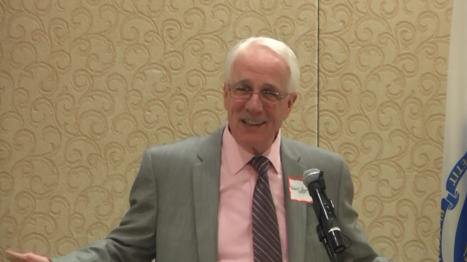Your cart is currently empty!

A “SCIENTIFIC” BASIS TO OPPOSE ABORTION-INDUCING BIRTH CONTROL?
The 2014 United States Supreme Court decision in the case of Burwell, Secretary of Health and Human Services, v. Hobby Lobby Stores, Inc. held that, under the Religious Freedom Restoration Act (RFRA), closely-held family-run businesses whose owners have sincere religious objection to participating in abortion (by providing abortifacient contraceptives through the company health plan) are not bound by the abortifacient mandatory contraceptive provisions of the Affordable Care Act. The Court found that to require compliance by these businesses to the abortifacient contraceptive mandate would substantially burden the exercise of religion by forcing them to violate their sincerely held religious beliefs or pay substantial fines.
The truth (which does not receive much attention in the media) is that the religious beliefs of the petitioners in Hobby Lobby are also supported by science. For some people, including some of those who do not share the religious belief that destruction of a human embryo before it is implanted in the womb is not an acceptable moral choice, science provides a rationale for opposition to such destruction. They see a scientific basis that is equally compelling to the religious basis of the Hobby Lobby petitioners.
Is there a scientific basis for opposition to the abortifacient variety of contraceptive methods? In order to answer that question, it is helpful to ask some questions from a purely scientific point of view. Perhaps a rational scientific discussion about such questions, in search for truth, will help resolve some bitter disagreement between persons on opposite sides of the right-to-life issue.
Perhaps it would be helpful to ask and answer the following questions in connection with every embryo that has developed as a result of the fertilization of a human female egg cell by a human male sperm cell:
1.From a scientific point of view, is such an embryo new?
2.From a scientific point of view, is such an embryo unique?
3.From a scientific point of view, is such an embryo developing?
4.From a scientific point of view, is such an embryo human?
5.From a scientific point of view, is such an embryo alive?
In considering the first question, the scientific consensus is that a “new” being is created at the moment when the sperm fertilizes the egg. The Human Genome Project informs us that “during [sexual reproduction,] a new organism is formed when the genetic material of the egg and sperm fuse.” http://www.genome.gov/10004765.
In considering the second question, the scientific consensus is that, in the context of traditional sexual reproduction (i.e., not cloning), the genetic material contained within an embryo is “unique” to that embryo. It contains the DNA sequence of neither the biological father nor the biological mother, but rather its own unique DNA sequence. While the DNA of the embryo is composed of material from both parents, its DNA sequence is not the subset of either parent.
In considering the third question, the scientific consensus is that the embryo is “developing” from the moment of fertilization. From that moment, it undergoes mitosis to divide itself into two cells; this process continues over the next few days to give four cells, then, eight, and so on, until the embryo implants into the woman’s womb, where it will then continue to develop.
http://embryology.med.unsw.edu.au/embryology/index.php?title=Embryonic_Development
In considering the fourth question, the scientific consensus is that the human embryo is “human”. The embryo, which follows fertilization, is species-specific. http://embryology.med.unsw.edu.au/embryology/index.php?title=Embryonic_Development
This means that sperms and eggs of different species cannot interact, and similarly that the development of the resulting human embryo can only form and develop into a human being (i.e., there is no possibility that a human embryo would ever develop into a dolphin or zebra).
In considering the fifth question, the scientific consensus is that the embryo is “alive”. The general definition of life includes a capacity of growth, reproduction, functional activity, and continual change preceding death. http://www.merriam-webster.com/dictionary/life. The embryo has the capacity for growth, engages in functional cellular activity, cellular reproduction, and continual change.
The scientific conclusion, therefore, is that the new, unique, developing, human life begins at the moment of fertilization. In light of this conclusion, it might be helpful to ask two non-scientific questions. First, is this new, unique, developing, human, and alive being innocent? Second, if so, by what authority can one legitimize the termination of such innocent, new, unique, developing, human, and alive being?
With respect to the first non-scientific question, unless one claims that cognition is a prerequisite for innocence or guilt, we must answer that the new, unique, developing, human, and alive being is innocent. Even one who claims that cognition is a prerequisite for innocence would have to admit that this new, unique, developing, human, and alive being is at least non-culpable (i.e., not blameworthy).
With respect to the second non-scientific question, some people might assert that they have authority to defend themselves from the developing embryo. However, lawful self-defense must be reasonable in light of all of the circumstances. The termination of new, unique, developing, human, innocent (or at least non-culpable) and alive beings, within days of fertilization is seldom, if ever, lawful self-defense. Only a so-called authority of oppression can be offered to attempt to justify the termination of new, unique, developing, human, innocent (or at least non-culpable) and alive beings, within days of fertilization.
The Hobby Lobby petitioners refused to participate, on religious grounds, in abortifacient contraception. Even those who do not share the religious perspective of the Hobby Lobby petitioners, but who respect science, can concur in opposition to the termination of new, unique, developing, human, innocent and alive beings which can result from the use of abortifacient contraception.
— Robert W. Joyce, Esq.
